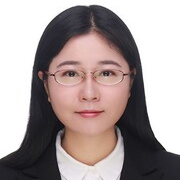Applications of Phononic Crystals & Acoustic Metamaterials
A special issue of Crystals (ISSN 2073-4352). This special issue belongs to the section "Hybrid and Composite Crystalline Materials".
Deadline for manuscript submissions: closed (20 January 2024) | Viewed by 10516
Special Issue Editors
Interests: smart materials and structures; acoustic metamaterials; nonlinear vibration and control; vibrational energy harvesting
Special Issue Information
Dear Colleagues,
Phononic crystals, as an artificial extension of electronic crystals in nature, are also known as acoustic band-gap materials, which are functional composites with a certain space period. Inside the phononic crystals, the elastic constants and mass densities of the material parameters vary periodically in space. The connected part is the matrix, and the disconnected part is the scatterer. The material properties of the matrix and the scatterer may be solid, gas, or liquid. According to their structural forms, they can be divided into one-dimensional, two-dimensional and three-dimensional systems, and the corresponding scatterers are layered plates, cylinders, and particles, respectively. The planar arrangement of cylinder scatterers can be a simple lattice, such as a tetragonal lattice, a rectangular lattice, or a triangular lattice, or a complex lattice, such as a hexagonal lattice, a kagome lattice, or an Archimedes lattice. The spatial lattice structure of particle scatterers can be simple cube, central cube, volume central cube, etc. The minimum periodic size of phononic crystal is a lattice constant, and the minimum unit of the periodic structure is a single cell. Due to the abundant and extraordinary properties of phononic crystals, there has been a growing amount of research interest in phononic crystals within academia and the polymer industry.
Research involving novel formulation and fabrication techniques, characterization, and potential applications of phononic crystals in many industrial fields is of particular importance today. Phononic crystals and acoustic metamaterials are used as functional materials in sustainable energy-harvesting-related applications (e.g., sensors, batteries for IoTs, etc.), vibration reduction applications, and in the development of lightweight engineered products with superior mechanical properties, to name a few. In this context, the importance of this Special Issue on phononic crystals and acoustic metamaterials to highlight recent progress in the phononic crystals and acoustic metamaterials research area becomes clear.
This Special Issue titled “Applications of Phononic Crystals & Acoustic Metamaterials” offers a broad scope of recent studies on novel phononic crystals and acoustic metamaterials, formulation, fabrication, characterization, structure–property relationships, and their applications. All of the keywords mentioned below are simply examples that showcase the variety of acceptable topics and do not serve to limit the scope of this Special Issue. As such, authors are highly encouraged to submit papers on these topics and others that are linked to the general focus of the Special Issue. Furthermore, the Special Issue aims to highlight the challenges, future research scope, and novel applications of phononic crystals and acoustic metamaterials, which can also be in the form of a short review.
Prof. Zhimiao Yan
Dr. Ting Tan
Guest Editors
Manuscript Submission Information
Manuscripts should be submitted online at www.mdpi.com by registering and logging in to this website. Once you are registered, click here to go to the submission form. Manuscripts can be submitted until the deadline. All submissions that pass pre-check are peer-reviewed. Accepted papers will be published continuously in the journal (as soon as accepted) and will be listed together on the special issue website. Research articles, review articles as well as short communications are invited. For planned papers, a title and short abstract (about 100 words) can be sent to the Editorial Office for announcement on this website.
Submitted manuscripts should not have been published previously, nor be under consideration for publication elsewhere (except conference proceedings papers). All manuscripts are thoroughly refereed through a single-blind peer-review process. A guide for authors and other relevant information for submission of manuscripts is available on the Instructions for Authors page. Crystals is an international peer-reviewed open access monthly journal published by MDPI.
Please visit the Instructions for Authors page before submitting a manuscript. The Article Processing Charge (APC) for publication in this open access journal is 2100 CHF (Swiss Francs). Submitted papers should be well formatted and use good English. Authors may use MDPI's English editing service prior to publication or during author revisions.
Keywords
- Periodic artificial structure
- Phononic crystals
- Acoustic metamaterials
- Elastic wave control
- Reduction of vibration and noise
- Energy harvesting
Benefits of Publishing in a Special Issue
- Ease of navigation: Grouping papers by topic helps scholars navigate broad scope journals more efficiently.
- Greater discoverability: Special Issues support the reach and impact of scientific research. Articles in Special Issues are more discoverable and cited more frequently.
- Expansion of research network: Special Issues facilitate connections among authors, fostering scientific collaborations.
- External promotion: Articles in Special Issues are often promoted through the journal's social media, increasing their visibility.
- e-Book format: Special Issues with more than 10 articles can be published as dedicated e-books, ensuring wide and rapid dissemination.
Further information on MDPI's Special Issue polices can be found here.






